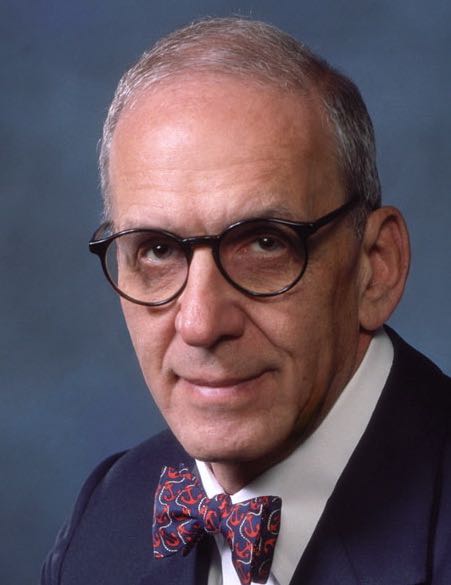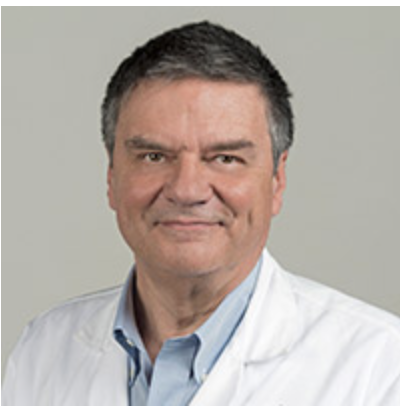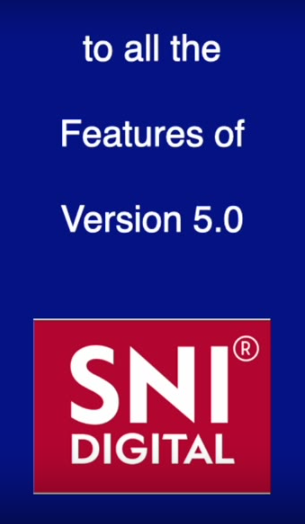0:01
Welcome to the 17th SNI and SNI Digital Bagdad Neurosurgery Online meeting held on September 4th, 2022.
0:14
The meeting originator and coordinator is Samir Haase, University of Bagdad and Cincinnati
0:26
The meeting title is sharing Iraqi neurosurgery experience in different cities, general neurosurgery, medical college status, micro neurosurgery and orbital surgery, September 2022.
0:45
The speaker will discuss neurosurgery and Baghdad personal experience 2, 000 cases per year. Dr. Amur N. Hafidid, head department of
1:01
neurosurgery, neurosurgery teaching hospital, Baghdad
1:07
The introduction is by Professor A. Hadi Al-Khalili, the former chair of the department of neurosurgery at Baghdad University We start with Dr. Anwar. Anwar Nuri, he is the graduate of Baghdad
1:25
Medical School in 1984. And he got his Iraqi board of neurosurgery in 1998 And he is senior consultant and neurosurgical hospital. And he supervised many board students and board students in Iraq in
1:43
practice. called the PhD students like
1:49
because the degree of board in Iraq equals PhD in qualification by the Ministry of Higher Education. So Dr. Anwar, you're coming to talk us with what his has an experience in the neurosurgical
2:04
hospital in general and what he has seen and what are interesting points you'd like to let us know. So thank you. That's yours, Dr. Anwar. Hello everyone. I am Dr. Anwar, a consultant to
2:18
neurosurgeon. I work in one of the oldest hospital in Iraq in the neurosurgery, which is a neurosurgical hospital of Baghdad. It's established in 1970. I involve about 140, 120 beds, and with
2:34
ICU,
2:39
we have realized the surgeon about 18. and we are the center of Alakian board and Albian board for student post-graduates. I will show here in my PowerPoint, the work of our hospital in 2021,
2:56
work of one year, last year, watch all the operations in our hospital.
3:04
We did in our hospital about crampomy for tumors 492
3:11
operation in our hospital. We did also proceed to surgery, 34 patients.
3:21
We did crampomy for traumatic, in
3:28
my tumor, epidural or cerebral 260.
3:32
Also, we did laminectomy, which includes cervical or dorsal cervical or dorsal or lumbar 324.
3:43
We did the VP shunt about 408.
3:48
Also, Cranis and Stos is 20 patients.
3:54
It's a spinal cord tumor surgery, including the cervical tumor or dorsal tumor or lumbar tumor, 12 cases.
4:02
Meningo-seal and myelomeningo-seal 104.
4:07
Buscular surgery, aneurysm, ABM, myomia, 60 patients.
4:17
Dr. Sergeri, nine, six patients.
4:21
ATV, five, 50-foot patients.
4:26
Debrancin, six patients.
4:30
Optic near-transpiration for BIAH, six.
4:34
Fair Class C, 25.
4:38
So, taxi surgery for biopsy or sometimes
4:43
for planning for a FLAB 2022.
4:47
Endoscopic surgery, manual, trans-denoidal 100.
4:53
This is all surgeries from one January to 31 December 2021.
5:00
The total is 2, 093 operation per year. Thank you.
5:08
Well, that's very short and concise, Dr. Anwar. Thank you so much Thank you. The floor is open for questions now, please. Yes, I may, again, we just cannot but be amazed at the incredible
5:23
work that you do, and I don't have to be flattering to you guys. I don't know you, you don't know me, but really an amazing work that you all do there. What calls my attention is, I mean, two
5:36
other questions. How many residents you have in the program? We have about 18. 18 residents at different years. And those 34 cases are posterior fossa that you mentioned posterior fossa as a
5:51
separate identity. Those are to
5:57
the
5:60
carry type one group, or which are those posterior fossa tumors? Are tumors or? No, I mean - Pustumors were included in the tumor
6:11
rule, right? Pustumoria Pustumoria. I mean - Pustum, I think the moment. I see, so the oncology surgery is close to 500, not because 400 tumor tumors plus the posterior fossa, or tumor
6:25
surgeries close to the 500. One last question, do you know roughly how many cases of carry type one you do? I would like to - It was a robust spinal surgery I see, I see, I see.
6:42
I was final schedule. Spinal schedule. Stenosis of Chiari, a tumor. Spinal schedule. I say, I say, I understand. So, no,
6:54
it's not a hospital.
6:57
I say, I understand. Sorry. Oh, I want hospital. Yes, yes, no, no, no. I don't embarrass that. No. No, no, no, no, no. I got that. I got that. You're doing a remarkable thing And 18
7:10
residents, and how involved are the residents in the surgery? I mean, they assist. They do surgeries on their own order. You know, our resident class
7:26
number one, class two, three, four, five. The five is the final. The final can help us to open the crate to me a closure that you are a, but we're a surgeon, we're a
7:39
specialist. And it's double.
7:43
The level one or level two, the only observer.
7:50
The first class, the only observer, the observer. But when he reached the level three or four, he
8:01
can take the opening of the create on me or tell you that you're a skin
8:07
When the
8:12
residents
8:15
finish your training,
8:18
where do they go join somebody in practice or another hospital? What is the general
8:25
plan? How did they mature and as a neurosurgeon?
8:30
When he passed the examination, he worked on the
8:36
observation of the same thing for two or three years, just a lot. Then he takes off his work. What a graduate when he passed the examination, he stayed for three years under supervision of. So
8:52
they stay with you. So
8:55
they stay with you
9:07
to develop their skills and mature and then eventually they decide what they want to do. Is that correct?
9:17
maybe in different centers Jim. I say yes. And
9:25
Dr. Anwar, one of the questions, how many do you teach students in your hospital or is there not enough space or time for that? What's your relationship with the medical school? What a team,
9:41
students, a team, different levels. Medical school, I know.
9:48
The medical school, and the university, medical city, or candy hospital, we have no medical school, we have no medical school. I only miss myself health, I mean, I'm deaf talk, students, and
9:50
the university of candy, or of a whole body bad.
10:16
what do you see as your greatest need in the next five years as you as you see the demand for neurosurgery expanding what do you see that you need and what you can do
10:31
did I make that clear Heidi I am not sure yes
10:36
in the coming five years what do you want to what aims what's your plans in my hospital in my hospital anywhere in general as a new researcher we're planning to get a
10:52
Gamma Knife Center you know we have four centers Gamma Knife and Iraq
10:59
we're planning for Gamma Center Gamma Knife Center on in our hospital I think one about one to two years they will will bring us a Gamma Knife yeah
11:13
and how about four for neurosurgery in general and five years time. What's your vision for the specialty in general?
11:22
We try to, as Shaki say, we try to,
11:29
if we did some, we will do some, so much about this. Yeah, great. Okay. So we start for pediatric, we start for pediatric and cigarettes you ate two years We will spine surgery and test, we
11:46
have two students on pediatric and two for spine. Yeah.
11:53
With scale base. Well, we hope this will be like the general. Also, we have one person on scale base from those topic of transmittal. Yeah, that's great. How many dedicated, how many operating
12:07
rooms do you have or do you have a,
12:12
Do you have a number of operations you do every day or is it limited?
12:19
I'm not sure I said that right, Harry.
12:23
How many operation theaters do you have and how many operations do you do? Seven theater. We have seven theater. About eight to nine daily. There is no trauma.
12:39
Yeah. Well, it tells me you're very busy. Um, that's why you have boys here.
12:51
Okay. Thank you. Terrific, terrific accomplishments. Terrific job. Sir, Edward, I would like to ask you about gamma navigation, neural navigation. Do you use it or shall I have a shade at
13:05
night?
13:07
Neural navigation, is it working? Do you use it there or shade at night?
13:23
What a shame, because we used it, as you remember, Dr. Ali, many times. About
13:33
2004, it went up to further the company could not fix it. I see.
13:41
Something we can't practice. Yeah, yeah.
13:45
One question, if I may, can you tell us about the mortality and morbidity? No.
13:55
Just an idea. If we mention mortality, our hospital is a trauma center. We can divide the mortality to two times.
14:08
Cold case mortality and traumatic mortality. remote mortality and this is a clear mortality of our cold case about one two percent. That's great. That's wonderful. Thank you. That's really
14:25
wonderful. Thank
14:28
you very, very busy service very busy to take care of all that plus trauma which you can't schedule Yes,
14:38
I have
14:41
one question to my friend and one who works in the hospital which is died by every neurosurgeon. I know the number maybe you didn't tell us number per return shot. Is it that you do number per
14:53
return shot or because I didn't see the number and do you still work per from their injuries because there was no case of per from their injury. Thank you
15:04
Well, let's let's don't know it. And
15:09
you're less.
15:12
The problem is we have the LP now, and the device, the device is not present now, we did our patient but less than before, you know the LP is very expensive outside, the surgery is this.
15:34
We transfer the patient to the shade at none of medical city.
15:41
Right, thanks. Dr. Anjan, we have a question? It was on a comment, actually, sir. Well, yes, please. He's great into Dr. Anwar, and I am very happy to see him again. I'm proud that I am
15:56
one of his students. I'm proud to be that he was my supervisor when I was in
16:04
neurosurgical hospital in Baghdad. So he should be proud that he generated a lot of neurosurgeon in Iraq, and I am proud to be one of them. So he's a great teacher. Thank you very much, sir.
16:21
Thank you very much. Thank you, and Jim, I am proud. I am student, Sajaj Khaliri, and I am proud, Sajaj Khaliri, what this
16:30
is the days before this.
16:36
Can I comment, sir? Yes, please, can you stop the sharing? I need to stop the sharing? No. The sharing, you stop the sharing? No, I'm still. Oh, wonderful, thanks.
16:52
Thank you, Dr. Anur, for this presentation.
16:57
For everybody, may know or may don't know that Dr. Anur is my supervisor during residency and I'm proud to be of neurosurgery teaching hospital. One, I think, one of them busiest neurotrauma
17:12
center all over the world. And that's what we represent here, even in the US, that this type of drainage, including the trauma, in addition to all the number that Dr. Anur showed, this give an
17:27
idea about how intense the training, how high volume the center is, and for everybody. they usually ask me that did the neurosurgery teaching hospital teaching you the microsurgery, but I answered
17:41
them with they teach me anatomy and teach me hemostasis. And if you know, not anatomy and hemostasis, this is the real base of neurosurgery. The additional and advancement will be just easy to fit
17:54
on the full armamentarium. So I'm really thankful for him. I'm proud of him being here and yeah, he's a real surgery teacher and thank you.
18:06
The video editors were Mustafa Ismail, College of Medicine, University of Baghdad,
18:11
and Fatima Ayad, fourth year medical student, University of Baghdad
18:24
We hope you enjoyed this presentation.
18:30
Please fill out your evaluation of this video to receive CME credit
18:40
This series is supported by the James I. and Carolyn R. Osman Educational Foundation, owner of SNI and SNI Digital and the Waymaster Corporation, producers of the Leading Gen Television Series,
18:60
Silent Majority Speaks, Role Models, and the Medical News Network
19:09
This recorded session is available free on snidigitalorg.
19:16
Send your questions or comments to usmansnidigitalorg. Thank you.



